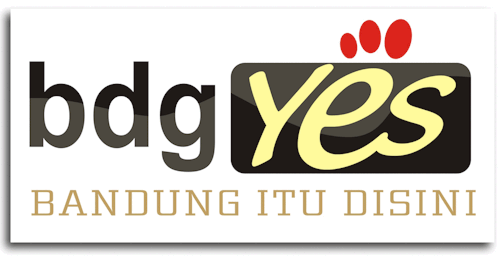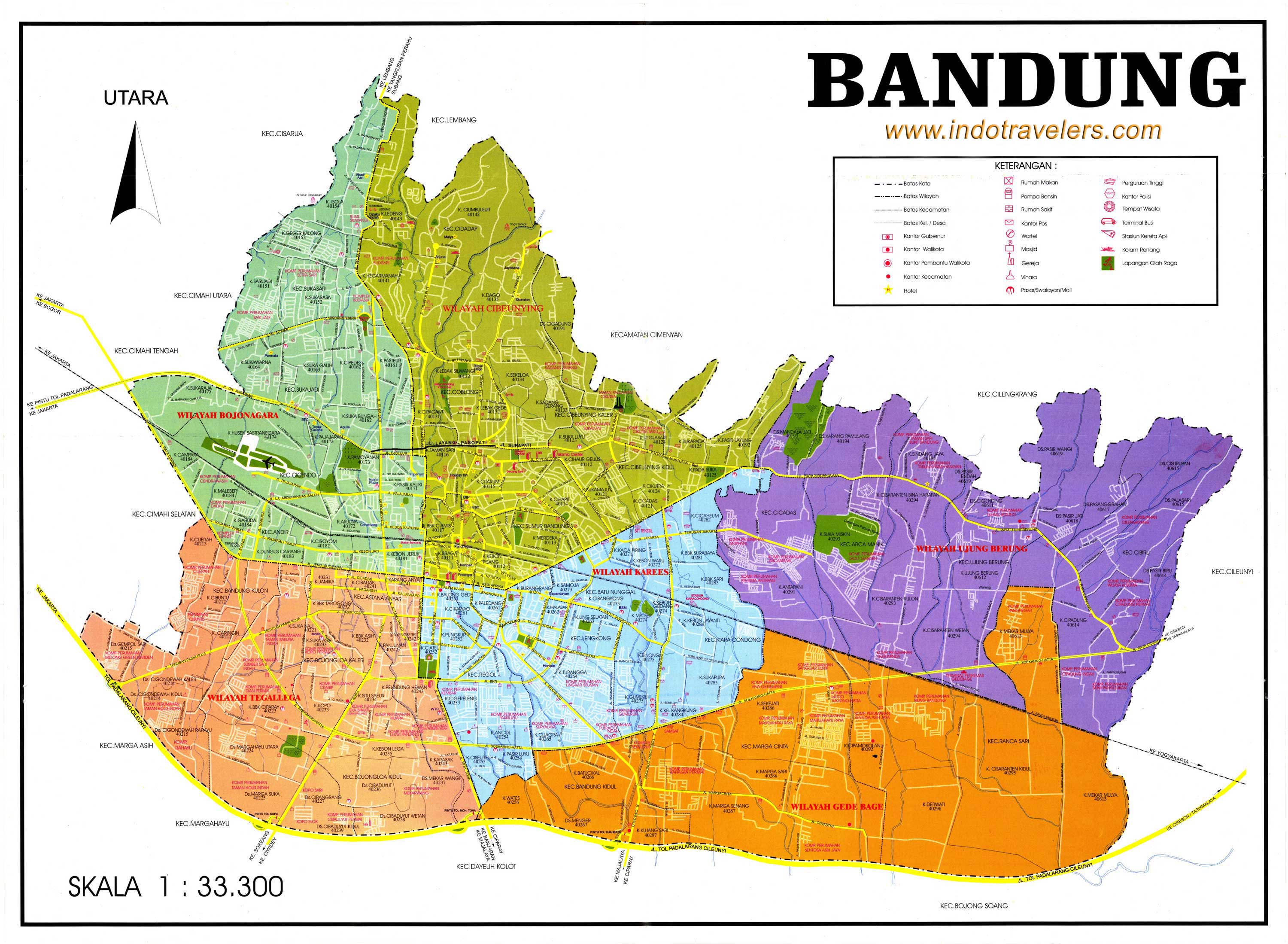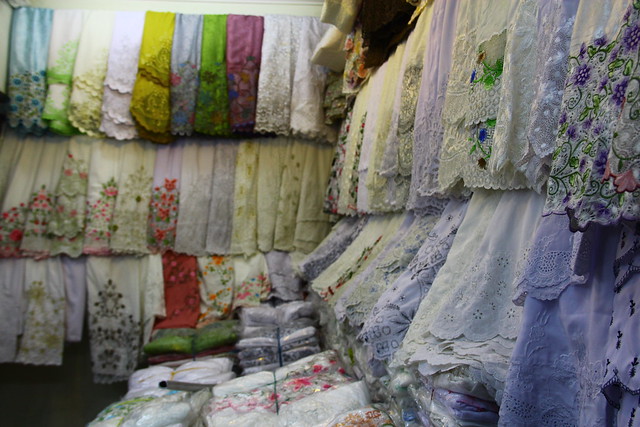About Bandung
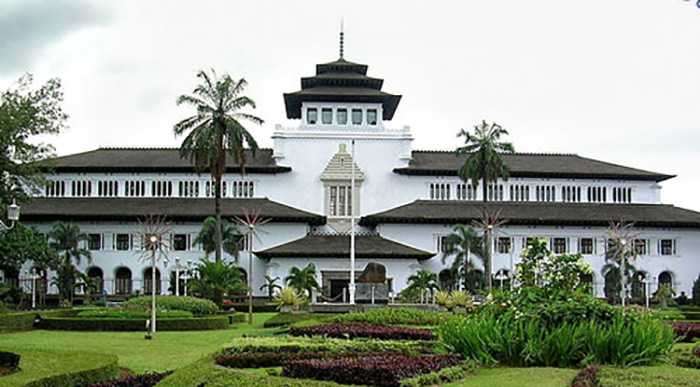
Of the 17,000 islands that make up the archipelago of the Republic of Indonesia, Java has historically been considered the heartland. Where Java has led-culturally, economically and politically down through the centuries, other regions have followed. On Java, still the most densely populated island of Indonesia, there are five Provinces. West Java is the largest, with the greatest population, and, some would claim, with the most pride.
West Java Province is located at part of western Java Island. The enchanting of Sunda land stretches from Sunda Strait in the west to the borders of Central Java in the east. The locals' people know West Java Province as the Land of Sunda. The region is primarily mountainous, with rich green valleys hugging lofty volcanic peaks, many of which surround the capital of West Java province. The history of West Java is a story of trade, spices, and the rise and fall of powerful kingdoms. In the late 1500's the region was ruled from mighty Cirebon, which still survives as a sultanate today, although a shadow of its former glory. West Java was of the first contact points in Indonesia for Indian traders and their cultural influences, and it was here that the Dutch and British first set foot in the archipelago.
This province has its own unique culture and language, both called Sundanese that is also used to call its people. The ancient kingdoms of Tarumanegara, Pajajaran, Banten and Cirebon would make interesting studies for the student of archaeology. Cirebon is located on the border between West and Central Java, having a mixed culture originating from the ancient Cirebon and Banten kingdoms, resulting in similar customs and dialects of the two people, although Banten is located at the extreme western part of the province.
West Java province its self, is formed based on the Constitution number 11/1950 on the establishment of West Java. With the issuance of Constitution number 23/2000 on Banten Province, West Java Governor Assisting Territory I Banten was inaugurated as Banten Province with its territories comprising Serang Regency, Pandeglang Regency, Lebak Regency, Tangerang Regency and Mayoralty, and Cilegon Mayoralty. After the change, at present West Java consists of 18 regencies, nine mayoralties, 584 districts, 5,201 villages and 609 sub districts.
The capital city of West Java province is Bandung city. Bandung is situated 180 km southeast of Jakarta. The city gamed fame in 1955 as the venue for the first Afro-Asian Conference, which brought together the leaders of 29 Asian, and African nations with the aim to promote economic and cultural relations and take a common stand against colonialism.
The road from Jakarta to Bandung passes through a beautiful panorama of mountains, paddy fields and small holiday resorts. An expressway connects the crowded capital city with Bogor and the mountain areas, and onward to Bandung. It has a number of sea resorts on its western and southern coasts, which have modern hotels and are popular during the weekends. The Sundanese people are soft-spoken. The women of the Bandung region are known for their beauty. A lighthearted people who have a love for bright colors, their mournful "kecapi" music is memory of beautiful legends.
Bandung is the capital of West Java in Indonesia. Bandung is 180 kilometers southeast from Jakarta.
Although it has a population of over two million the pace of city life is slower than Jakarta's.
Today Bandung has a population of 2 million people, Bandung area an estimated 4 million.
Bandung is situated on a plateau 768 meters above sea level with a cool climate throughout the year. Bandung is the most European city of Java.
The raining season starts in Bandung a little bit earlier, then the rest of Indonesia.
Normally the raining season in Indonesia is from October till May, the peak of the raining season is in January.
The dry season is from June until August,temperature is then 25-30 degrees Celsius during the day.
|
In the morning, the sun is almost shining every day, but in the afternoon many times it gets cloudy, for sunbathing
we have to wake up early from 6.30 the sun is already there. In the evening when the sun is down the temperature has drops.
The average temperature in Bandung is 22 degrees Celsius; the weather is pleasant all year round.
There are short drives up to the mountain resorts of Lembang and the Bosscha Observatory,
and higher to the volcanic crater of Tangkuban Perahu, the only crater in Java accessible all the way by car as far as its rim.
It is an awe-inspiring sight of emanating sulfur fumes. Descent into all the volcano's 12 craters is only possible with the aid of an experienced guide, because of the presence of suffocating gases at certain spots. Just a 15 minutes drive from Tangkuban Perahu is a hot springs resort. Here we can swim in warm mineral water pools, good for healing skin problems. The resort provides visitors with a bar, restaurants, t
ennis courts and cottage style hotels overlooking a beautiful mountain-scope.
Due to its topology, climate in Bandung is relatively cooler throughout the year than most of Indonesian cities. The average annual rainfall ranges from 1,000 milimetres in the middle and the southeast region to 3,500 milimetres in the north of the city. The wet season conforms
with other Indonesian regions, around November to April. The average temperature is 22.6°C, cooler than most Indonesian cities.
|
Bandung is Indonesia's third-largest city but lies close enough to Jakarta and offers cooler weather. Bandung features a large collection of Dutch Colonial architecture, as well as a beautiful botanic garden, zoo, golf courses and a wide variety of culinary offerings.

  
Rumah Mode
Discover the unique of Bandung in One Day with our Bandung sightseeing Tour Package program. Visit any interrest places in Bandung downtown, like Gedung Sate, Factory Outlets Areas (in Jalan Dago, Jalan Riau, Jalan Setiabudi), Bandung Shopping Malls, the Groote Postweg, Geological Museum, Famous University (Bandung Institute of Technology and Universitas Padjajaran), Bandung Uniques market (like Cibadyut leather industy center, Cihampelas for Jeans Street, Palasari as specialize market for Books, Pasar Baru as a clothes market, Jalan Surapati specialize for T-Shirt industrial area). Historycal building places.
TENGKUBAN PERAHU
Tangkuban Perahu (spelt Tangkuban Parahu in the local Sundanese dialect) is a dormant volcano 30 km north of the city of Bandung, the provincial capital of West Java, Indonesia. It last erupted in 1826, 1829, 1842, 1846, 1896, 1910, 1926, 1929, 1952, 1957, 1961, 1965, 1967, 1969, 1983. It is a popular tourist attraction where tourists can hike or ride to the edge of the crater to view the hot water springs and boiling mud up close, and buy eggs cooked on the hot surface. [2] This stratovolcano is on the island of Java and last erupted in 1983. Together with Mount Burangrang and Bukit Tunggul, those are remnants of the ancient Mount Sunda after the plinian eruption caused the Caldera to collapse.
In April 2005 the Directorate of Volcanology and Geological Hazard Mitigation raised an alert, forbidding visitors from going up the volcano. "Sensors on the slopes of the two mountains - Anak Krakatoa on the southern tip of Sumatra Island and Tangkuban Perahu in Java - picked up an increase in volcanic activity and a build up of gases, said government volcanologist Syamsul Rizal." [3]
where the legend begins...
The name translates roughly to "upturning of (a) boat" or "upturned boat" in Sundanese, referring to the local legend of its creation. The story tells of "Dayang Sumbi", a beauty who lived in West Java. She cast away her son "Sangkuriang" for disobedience, and in her sadness was granted the power of eternal youth by the gods. After many years in exile, Sangkuriang decided to return to his home, long after the two had forgotten and failed to recognize each other. Sangkuriang fell in love with Dayang Sumbi and planned to marry her, only for Dayang Sumbi to recognize his birthmark just as he was about to go hunting. In order to prevent the marriage from taking place, Dayang Sumbi asked Sangkuriang to build a dam on the river Citarum and to build a large boat to cross the river, both before the sunrise. Sangkuriang meditated and summoned mythical ogre-like creatures -buta hejo or green giant(s)- to do his bidding. Dayang Sumbi saw that the tasks were almost completed and called on her workers to spread red silk cloths east of the city, to give the impression of impending sunrise. Sangkuriang was fooled, and upon believing that he had failed, kicked the dam and the unfinished boat, resulting in severe flooding and the creation of Tangkuban Perahu from the hull of the boat. And if you want to find out more go to The Legend of Sangkuriang

The Legend of Sangkuriang
The legend of Bandung begins here...
(According to the story of Sundanese Folk)
From passion, desire, love, and angry of Sangkuriang, The Eruption of Mountain Tangkuban Parahu, until now become a city...
Here is the short story...
There is a kingdom in Priangan Land. Live a happy family, a father in form of dog (his name is Tumang), a mother (her nameis Dayang Sumbi), and a child call Sangkuriang. Tumang is demigod possessing magic powers.
One day, Dayang Sumbi asked her son to go hunting in the nearest jungle and she wanted some deer liver or venison. So Sangkuriang went hunting with his lovely dog, Tumang, to please his mother. After hunting all day with empty-handed, Sangkuriang began desperate and worried. Think shortly, Sangkuriang took his arrow and shot his dog. Then he took the dog liver or flesh and carried home.
He gave dog liver or flesh to his mother. Soon Dayang Sumbi fine out that Sangkuriang lied to her. She knew Sangkuriang had killed Tumang. So, She angry and hit Sangkuriang head. Sangkuriang got wounded and scar. Sangkuriang cast away from their home.
Years go bye, Sangkuriang had travel many places and on one day, he arrived at a village which is used to be his home. He met a beautiful woman whom actually his mother and felt in love with her.
Their love grew naturally and one day, when they were discussing their wedding plans, Dayang Sumbi suddenly realised that the profile of Sangkuriang's head matched that of her only son's who had left twenty years earlier. How could she marry her own son? But she did not wish to dissapointed him by canceling the wedding. So, although she agreed to marry Sangkuriang, she would do so only on the condition that he provide her with a lake and a boat with which they could sail on the dawn of their wedding day.
Sangkuriang accepted this condition and built a lake by damming the Citarum river. With a dawn just moment away and the boat almost complete, Dayang Sumbi realised that Sangkuriang would fulfill the condition she had set. With a wave of her supernatural shawl, she lit up the eastern horizon with flashes of light. Deceived by false dawn, the cock crowed and farmers rose for the new day.
With his work not yet complete, SangkuriaNg realised that his endeavor were lost. With all his anger, he kicked the boat that he himself had built. The boat fell over and, in so doing become the mountain TANGKUBAN PARAHU (in Sundanese, TANGKUBAN means upturned or upside down, and PARAHU means boat). With the dam torn asunder, the water drained from the lake becoming a wide plain and nowadays became a city called BANDUNG (from the word BENDUNG, which means Dam).
Get There
TangkubanPerahu is a 90 minutes drive from Bandung on weekdays. The easiest way to get there is by joining a tour or rent a car. However, if you’re up to take an adventurous journey, you may take a Subang Colt via Lembang from Bandung’s minibus terminal in front of the train station to the park entrance of TangkubanPerahu. The entry is 20,000IDR per person. There are minibuses, which
Tangkuban Perahu is a 90 minutes drive from Bandung on weekdays. The easiest way to get there is by joining a tour or rent a car. However, if you’re up to take an adventurous journey, you may take a Subang Colt via Lembang from Bandung’s minibus terminal in front of the train station to the park entrance of Tangkuban Perahu. The entry is 20,000IDR per person. There are minibuses, which lead you to the top, whiich officially cost 10,000IDR per person. Alternatively, you can walk from the gate at the main road. It’s 4,5km hike along the road or you can take the more interesting side trail that goes via Kawah Domas. It’s a very steep one-hour walk through the jungle and better tackled from the top down. It starts just behind the information centre and is easy to follow
Tips
•Not everyone can stand the smell of the sulfur fumes; handkerchiefs are suggested to cover your nose and mouth.
•Never walk into the crater without care, it’s better to hire trusted guide.
•Do not hesitate to resist peddlers if you are not interested.
•Best bring a jacket/sweater to protect yourself from the cold temperature.
•Bring an umbrella to avoid sunburn
•Not everyone can stand the smell of the sulfur fumes; handkerchiefs are suggested to cover your nose and mouth.
•Never walk into the crater without care, it’s better to hire trusted guide.
•Do not hesitate to resist peddlers if you are not interested.
•Best bring a jacket/sweater to protect yourself from the cold temperature.
•Bring an umbrella to avoid sunburn or possible heavy downpours.
•Try to reach the crater as early as possible because around noon the mist starts to roll in through the trees.
•Do not hesitate to say ‘No’ to the vexing local guides who follow you around and ask for money at the end of the trip.
To Do
KawahRatu is the huge ‘Queen Crater’ located at the top. It’s the only one crater that can be reached easily by car to its rim. Here you can admire the spectacular panoramic view of this large and deep crater. You may also imagine that you hear a man sighing as if carrying a heavy burden. This wheezing sound actually comes from the sulfur steam that comes out deep from the bow
Kawah Ratu is the huge ‘Queen Crater’ located at the top. It’s the only one crater that can be reached easily by car to its rim. Here you can admire the spectacular panoramic view of this large and deep crater. You may also imagine that you hear a man sighing as if carrying a heavy burden. This wheezing sound actually comes from the sulfur steam that comes out deep from the bowels of the earth. Walk around the rim of the main Kawah Ratu crater and in around 20 minutes you will come to the second crater, called Kawah Upas. The trail here is steep and slippery in some parts; however, your special efforts wil be well rewarded when you notice the shade trees and breathtaking views on either side of the muddy land. This is the best time to freeze the moment through your camera. You can also head off to the third crater, the Kawah Domas.
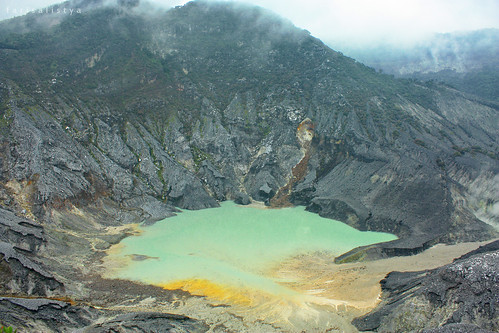


its a good place to have nice pics..wonderful scenery and cold. you can bargain with local vendors, but u just ignore them...say sorry, thanks..then they will leave you. its so fresh aired place. the crater looks mysterious, cant imagine it is A CRATER. the sulphuric acid out of the surface gives strong smell sometimes. But when its windy, its not really that smelly. ...you can ride horse here. well, the rest is enjoyable.
KAWAH DOMAS - near to Tengkuban Perahu
Walk way to kawah domas
ely get her massage at kawah domas near to Tengkuban perahu

sceneries view of kawah Domas

Mud @ lumpur belerang at kawah domas
CIATER HOTSPRING
A good place to relax after a long journey. If you love sports and outdoor activities, maybe can try flying fox, ATV go kart
camping site, elephant riding and etc. For person like me, I just enjoying the hotspring!
Tips: An ice cream seller will approaching you once you arrived here. He will explain
and show you all the places in Ciater hot spring. He did for free just at the end of tour, he will ask you whether want to buy the ice cream. No harm if you help him. Having an ice cream would be lovely too!
.
KAWAH PUTIH
Kawah Putih lake (7.10° S 107.24° E) is one of the two craters which make up Mount Patuha, an andesitic stratovolcano (a "composite" volcano). [2] Mt Patuha is one of numerous volcanoes in Java. Kawah Putih crater lake itself represents a relatively stable volcanic system with no records of significant activity since around 1600. [3]
The Kawah Putih site was opened to visitors in 1987. The lake is 2,430 meters above sea level so the local climate is often quite chilly (temperatures are frequently around 10 degrees celsius). This makes a brisk change from the humidity of the north Java plain and the capital city of Jakarta. Kawah Putih is a sizeable highly acid lake (pH 0.5-1.3) which changes colour from bluish to whitish green, or brown, depending on the concentration of sulfur and the temperature or the oxidation state. [4] The sand and rocks surrounding the lake have been also leached into whitish colours through interaction with the acidic lake waters (with possible mineral precipitation as well).
The surrounding area is heavily forested. There is a pathway down to the lake which is surrounded by the high walls of the crater nestling into the side of Mt Patuha. The smell of sulfur is strong because there is a good deal of steam and sulfurous gas bubbling from the lake. There are tracks around the lake and through the nearby forest including to the peak of Mt Patuha. Visitors can walk around the crater area or sit in the various shelters. Local plants not widely found in lower altitudes in Java include javanese Edelweiss and Cantigy ( Vaccinium varingifolium). Animals and birds which may be spotted include eagles, owls, monkeys, mouse deer, and forest pigs. Panthers, leopards and pythons have also sometimes been seen in the nearby forest.
A range of simple facilities exists near the lake. There is ample parking and public toilets. Entrepreneurial vendors sell trinkets and food. The site is well-signposted. Local farmers often take the opportunity to sell strawberries (widely grown in the area), steamed corn, and various other items such as pumpkin seeds ( pepita).
Kawah Putih and the surrounding area (where there are resort facilities such as hot spas) is a popular spot for people from Bandung. On weekends and on holidays, quite large numbers of Indonesian tourists visit Kawah Putih. The site is so far less well-known to international tourists. According to Perhutani staff at the site, up to 10,000 people might visit on busy holidays and the total number of visitors is perhaps 300,000 per year.

Ole - ole from the kawah Putih
As you know, Bandung high hill is very famous for it strawberry, and the price is quite cheap as well, you may buy as cheap as Rp10,000 for a pack, but it would not be as good as the one that you may choose on your own, which will cost around Rp40,000 per 500g. They do have a farm where you can pick your own strawberry, I saw few on the way up here, if you are not on a rush and perhaps you can enjoy the berry picking activity. They do sell local made candy, some junkies etc that you may try at the parking area of Kawah Putih.
 Blue berries picking at farm near to kawah putih area
Blue berries picking at farm near to kawah putih area
exotic sceneries
Tips : don't forget to wear your mask as the sulphur smell are extremely strong
Lembang Floating Market – Hottest in Bandung
Where is the Location of Lembang Floating Market?
Many visitors to Bandung still don’t know the location of Lembang Floating Market. The floating market of Lembang is located at what once was Situ or Lake Umar Lembang, it is the latest and the hottest tourist attraction for visitor who wants to experience natural side of Bandung. The location is very easy to reach if you come from Bandung, just follow the one way road that leads back from Lembang to Bandung and you will find the sign location at the left of the road.
Initially the owner of the place was planning to turn the lake to a fishing site where people come and pay to fish, but upon more investigation the lake water is not suitable for fish to live that is why it is decided to be built as a first floating market in Bandung.
Upon entering the site you will find many small wooden huts utilized for various shop that serves many kinds of things from souvenir, Sundanese food, Chinese style steamboat to coffee. On the other side of the lake is where the food stalls are located, each of the food stalls occupy small boats with various design harbored on the waterside. Somehow they are different from the floating market in Bangkok where the boat stalls move along the river.
Along the harbor is where the lakeside shelter with an eating area on one side and small boats with various designs harbored on the waterside, functioning as food stalls.
There are two ways for visitors to enjoy the food, first they order the food and after the food come they can eat it at the open air shelter along the lake side, the other way is you can hire a boat and order and eat on the boat, whichever way choose they are both enjoyable.
Every transaction inside the floating market area must be done with coins that can be bought from certain point at the market, the coins come in various nomination from Rp. 5000 to Rp. 100,000. You don’t have to worry if however you are left with some coins at the end of your visit as you can always redeem them.
The price of food, which was mostly Indonesian only cost between Rp 10,000 to Rp 50,000.
Let’s see what we can have here, first there is the ever popular Nasi Timbel which comprised of fragrant rice wrapped in banana leaves, a piece of fried chicken, kremesan (crispy condiment), fried tempeh and tofu, some fried salty fish, fresh vegetables, a bowl of tamarind soup, two types of sambal (stir fried chili condiment) a small plate of crackers plus a small bottle of mineral water
Rp 35,000.

One stall that is perhaps for the more adventurous serves tutut, which is a type of snail that lives in paddy fields. The signature tutut dishes come with a mix sauce of turmeric with coconut milk and costs Rp 15,000 per portion.

There is also Sundanese side dishes, the banana friters, misro – fried cassava with palm sugar filling, combro – fried cassava with spicy fermented bean filling, and tempe mendoan, which is thinly sliced fried tempeh with sweet soya sauce and chilli. These crunchy treats are sold in baskets for Rp 10,000. Don’t forget you can also find ketan bakar (grilled sticky rice), jagung bakar and colenak (sweet fermented cassava) here.
Aside from stuffing yourself with food at the floating market, you can indulge in a number of water activities. The choices include paddle boats, canoeing and water cycles, they are costs varies from Rp 30,000 to Rp 50,000 per 15-30 minutes ride. Another free alternative to spend your time here is to take a free tour around Lembang on the Floating Market’s bus.Lembang Floating Market
Operation Schedule
This tourist attraction opens 7 days a week with this schedule:
Please note even it is open on Monday, but not all the food stalls are open.
Entrance Fee: Rp. 10,000 (US$ 0.89) upon entering the site, or dlm RM 3.50 only
Parking Fee: Rp. 3,000 for the whole day

|
|

Barang Jualan di Floating Market Daerah Lembang - Bandung
 |
| Nice Sceneries view of Floating Market at Daerah Lembang - Bandung |
 |
| Pasar Ampungan Bandung - Lembang |
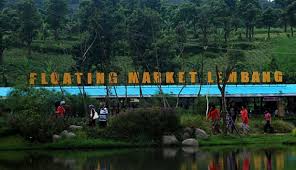 |
| Floating Market Lembang - Bandung |
PARIS VAN JAVA - BANDUNG ( CITY OF HEAVENLY)
Paris Van Java Shopping Mall in Bandung is one of the popular shopping spots for the locals and also tourist. Located at Jalan Setiabudi, everyone and anyone in Bandung knows about PVJ as the locals call it. The name Paris Van Java came about because back in the day, Bandung was know as the Paris of Java mostly due to the Dutch era.
The kind of shopping you will find in here is from middle to high end items. So one would not find the cheaper brands there. One of the brands I saw there was Charles & Keith selling handbags and shoes. Other popular brands are Esprit, Mango (MNG), Roxy, La Senza, Rip Curl, Nike, Crocs, Adidas and many others. Do not expect Versace, Armani, DKNY, Prada, Hugo and the super top named outlets here.
Overall, it is a nice place to go for a meal and do some window shopping. Only if you have the time to spare in Bandung. The ambiance in PVJs street area is also very nice. They have the open area with stalls in the middle selling various items from nick-knacks to even rare exotic jungle plants. I was so tempted to buy some plants but I know it would not make it through the customs
The way they use the Tanduk Rusa as decorations around the open area is also interesting. Planted along the mall street, these Staghorn Ferns are huge, beautiful and well taken care of. I must say that the landscaping department of PVJ is really creative.

For food,I tried the newly opened Pepper Lunch Japanese Fine Steaks. A fast food restaurant serving a variety of Japanese styled dishes. Only reason I tried this was they do not have it in Malaysia.

Another thing you have to be careful at PVJ is when it rains, the outdoor street area is not fully covered so walking there would be wise with an umbrella. Also, the parking on weekends can be really bad. If you have a driver, they would either drop you at he main entrance and pick you from there.
If you are in Bandung doing some Factory Outlets Shopping, chances are you will be spending at least the weekend or maybe four to five days there. Don't forget to try some of the famous Sundanese Food and Kartika Sari Layer Cake House there. Apart from just plain shopping or staying in the hotel, there are also sight seeing to be done or you can take a break and visit Paris Van Java Shopping Mall in Bandung. 

BANDUNG FACTORY OUTLET
TOKO 3
You can cater your jeans at took 3 ( model in pic : my akak Ita, Kak Hasni and Ely ...)
Champelas Walk

Pak Asep with our Guest at Champelas Walk

 |



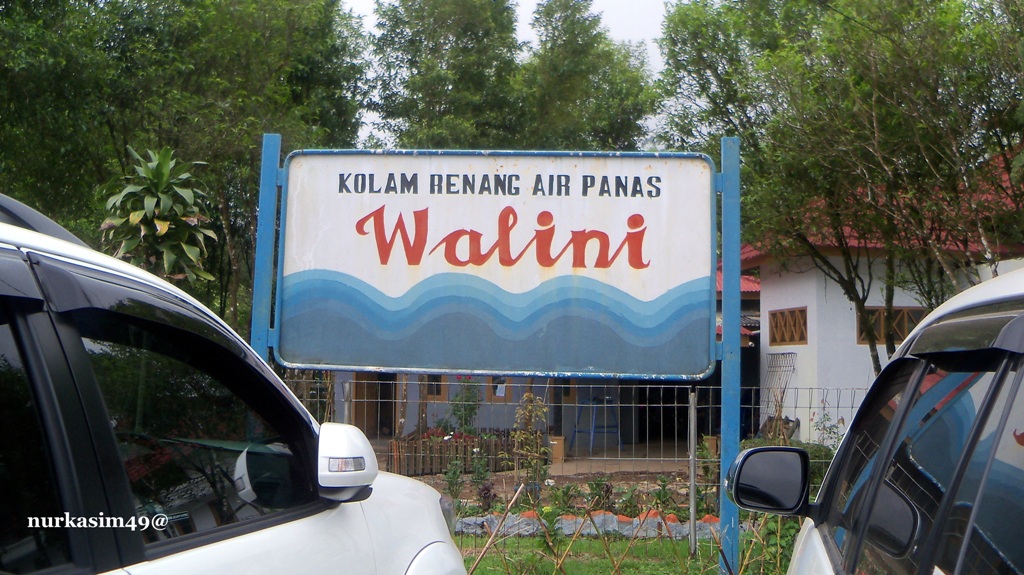




.jpg)







